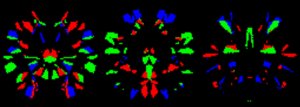pricescope
Ideal_Rock
- Joined
- Dec 31, 1999
- Messages
- 8,266
The Effects of Indexed Upper Half Facets by Peter Yantzer, Director AGS Labs
The article analyses effect of the upper girdle facets on visual appearance, light leakage, weight retention, girdle, etc of the round brilliant diamonds.
American Gem Society's ASET ( Angular Spectrum Evaluation Tool ) images are used in addition to Firescope, H&A, and brightness simulations
The article analyses effect of the upper girdle facets on visual appearance, light leakage, weight retention, girdle, etc of the round brilliant diamonds.
American Gem Society's ASET ( Angular Spectrum Evaluation Tool ) images are used in addition to Firescope, H&A, and brightness simulations










300x240.png)